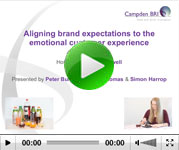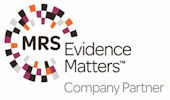Sensing brands

To discuss your needs
Sensing brands is an approach that creates long term profitability by creating a distinctive and motivating sensory signature that brands own and drive. In doing so, it deepens consumers' emotional engagement between a brand, product and packaging, strengthening loyalty and delivering a competitive edge.
There are four key steps in our approach:
- Conducting a brand audit
- Creating the desired sensory brand signature
- Evaluating the sensory brand signature through:
- A-Sense: evaluation of brand communications in terms of creating consumers’ expectations aligned to the sensory brand signature and product experience.
- Pac-Sense: evaluation of the packaging in terms of creating consumers’ expectations aligned to the sensory brand signature and product experience.
- Pro-Sense: evaluation of the product in terms of alignment to the sensory brand signature and consumer acceptability.
- S-Sense: assessment of consumers’ satisfaction of the holistic product and packaging experience in relation to the sensory brand signature.
- Assessing the value of the sensory brand signature
A Sensing brands approach provides a differentiated brand experience that drives repeat purchase behaviour.

Find out more - watch our 30 minute webinar
This presentation reviews the role of sensory branding in brand development and explains why understanding emotions is vital for connecting brands with consumers.
Member of

Powered by


A-Sense
Using the five senses to evaluate consumers' expectations derived from communications.
- Understand current and desired brand positioning among the target market – functionally , sensorially and emotionally
- Evaluate and monitor brand communications to ensure consistency with brand positioning and promise.
- Refine and sharpen communication campaigns
Pac-Sense
Using the five senses to evaluate consumers' expectations derived from packaging.
- Expected hedonic pleasure of the product
- Expected sensory attributes of the product (identification and intensity)
- Associated emotions derived from the packaging: colour, shape, sound and design
- Appeal of product in brand and packaging context
- Purchase intention
When pack and brand are misaligned it undermines and dilutes the brand message and detrimentally impacts on the branded product experience.
These assessments are compared to the sensory architecture used to design and express the sensory brand signature. Achieving maximum alignment between brand and packaging format will augment, reinforce and support the brand message.
Pro-Sense
Using the five senses to evaluate the unbranded product experience.
- Hedonic pleasure
- Perceived sensory attributes (identification and intensity)
- Temporal (multidimensional assessment of the sensory properties as they evolve during the consumption experience)
- Associated emotions
- Consumption occasions/contexts
- Uniqueness
- Purchase intention
Achieving maximum alignment between brand and product will deliver emotional outcomes that are rewarding for consumers (especially those amenable to the brand), fostering longer-term relationships with the brand.
S-Sense
Using the five senses to evaluate the branded product experience.
- Hedonic pleasure of the branded product experience (in/out of context)
- Perceived sensory attributes (identification and intensity)
- Associated emotions of the branded product experience (in/out of context)
- Uniqueness of the branded product experience (in/out of context)
- Appeal of the branded product experience (in/out of context)
- Overall satisfaction, the reward and pleasure of the product/pack experience
- Purchase intention
S-Sense incorporates the Pac-Sense and Pro-Sense measures to determine the extent of congruence between brand, product and pack. It generates an overall satisfaction index of the product experience.
Key services

Time-based sensory mapping
Increasingly using time-based sensory mapping to obtain detailed sensory feedback.
Other links
Where we refer to UKAS Accreditation
The Campden BRI group companies listed below are accredited in accordance with the recognised International Standard ISO/IEC 17025:2017 by the United Kingdom Accreditation Service (UKAS). The accreditation demonstrates technical competence for a defined scope of methods, specific to each site, as detailed in the schedules of accreditation bearing the testing laboratory number. The schedules may be revised from time to time and reissued by UKAS. The most recent issue of the schedules are available from the UKAS website www.ukas.com. Campden BRI (Chipping Campden) Limited is a UKAS accredited testing laboratory No. 1079








